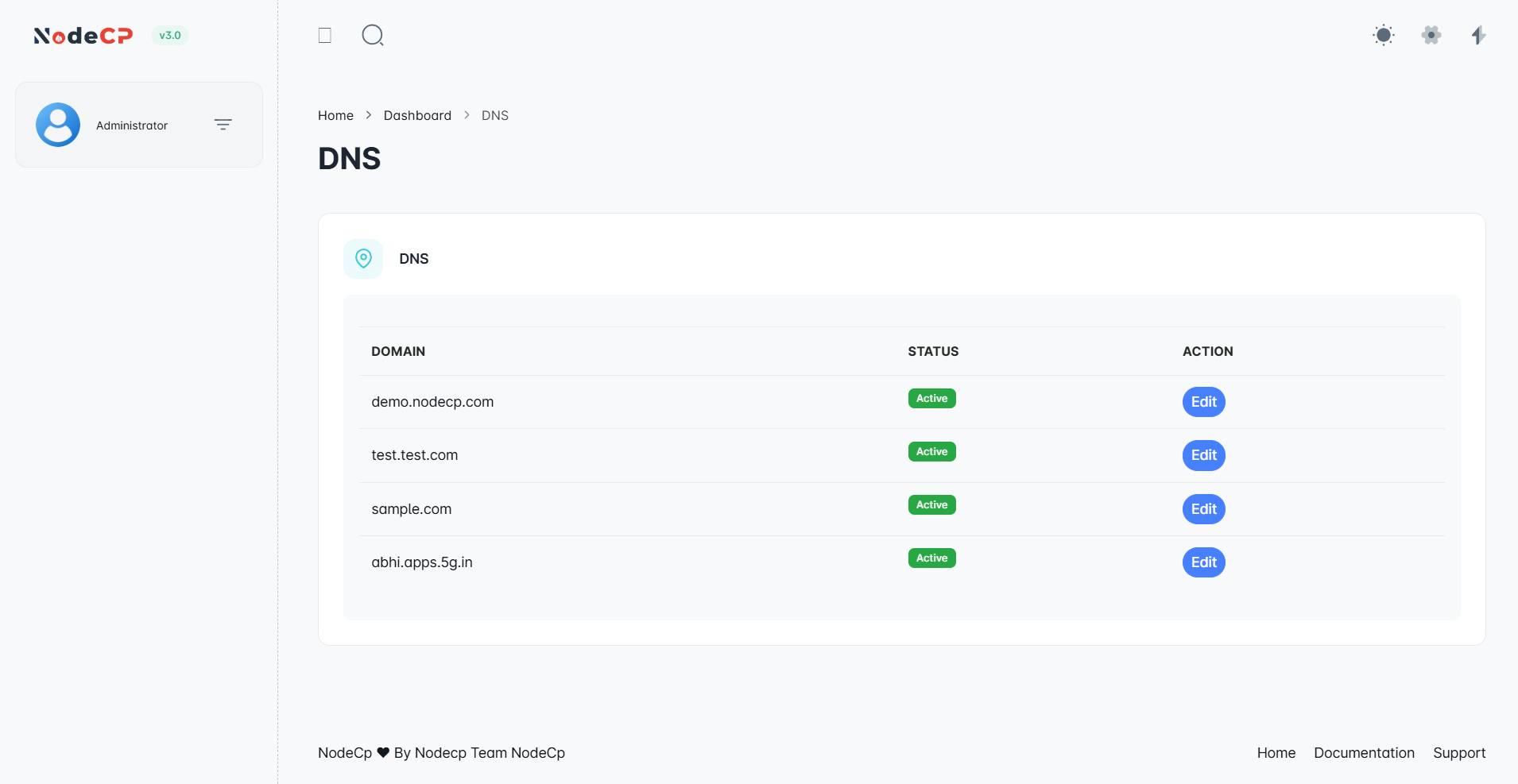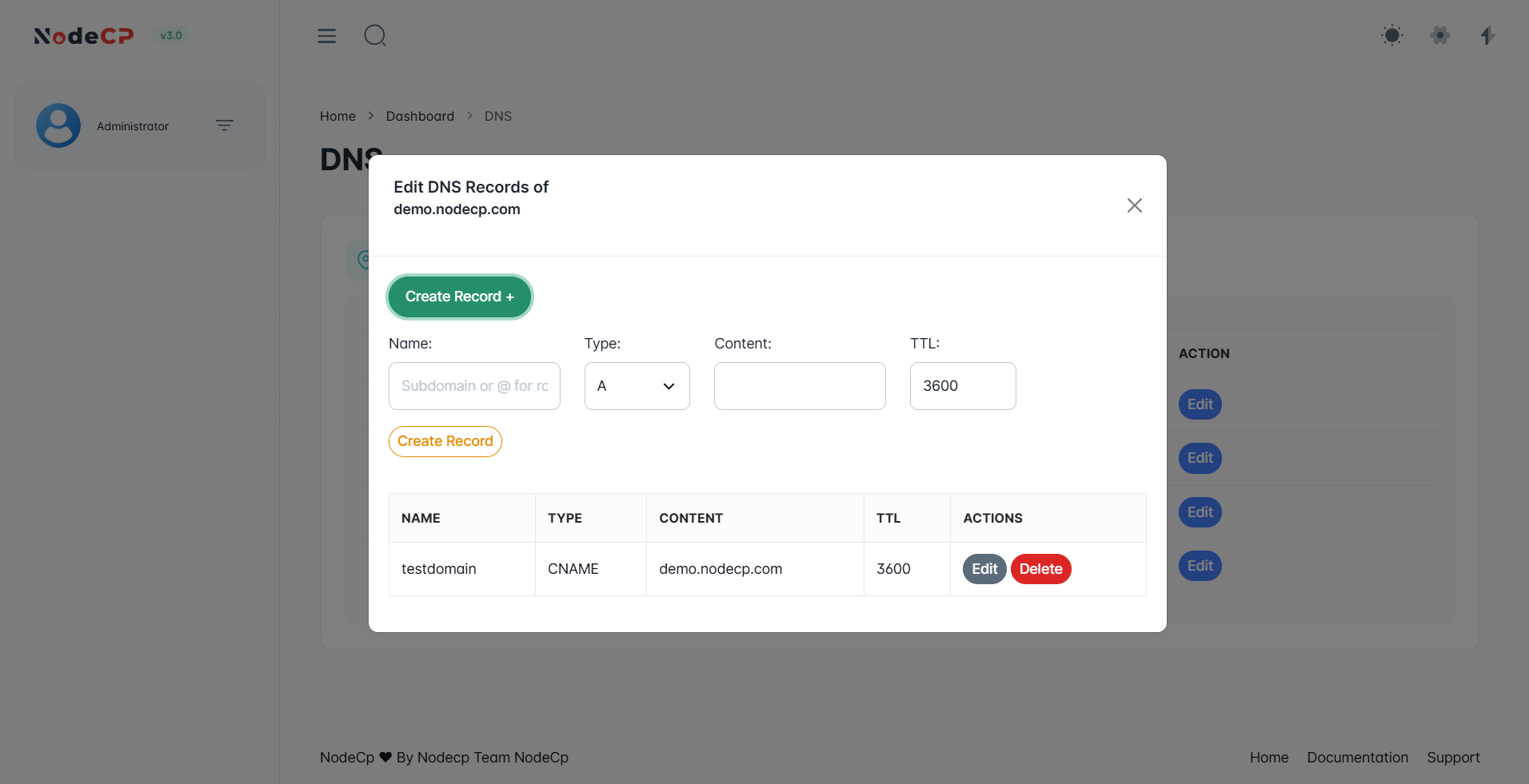DNS Management
Overview
DNS (Domain Name System) is a crucial component of the internet that translates domain names into IP addresses. NodeCP provides an easy-to-use interface to manage DNS records efficiently.
Viewing and Managing DNS Zones
📌 Step 1: View Existing DNS Zones

- This section lists all domains and their status.
- Click "Edit" to manage the DNS records of a specific domain.
Creating and Editing DNS Records
📌 Step 2: Edit DNS Records

- Click "Create Record +" to add a new DNS entry.
- Enter:
- Name: Subdomain or root (
@for root domain). - Type: Select from A, MX, CNAME, AAAA, etc.
- Content: The value associated with the record.
- TTL: Time-to-Live (how long the record is cached).
- Name: Subdomain or root (
🛠 Common DNS Record Types and Their Purpose
| Type | Purpose |
|---|---|
| A | Points a domain to an IPv4 address. |
| AAAA | Points a domain to an IPv6 address. |
| CNAME | Creates an alias for another domain name. |
| MX | Specifies mail servers for email delivery. |
| TXT | Stores arbitrary text, often used for verification (SPF, DKIM, etc.). |
| NS | Defines authoritative name servers for the domain. |
| SRV | Defines location (hostname + port) of specific services. |
| PTR | Reverse lookup to match an IP with a domain name. |
Why Manage DNS?
- 🔹 Ensure proper website resolution (A/AAAA records).
- ✉️ Configure email delivery (MX records).
- 🔄 Set up subdomains and aliases (CNAME records).
- 🔑 Secure domains with SPF, DKIM, and DMARC (TXT records).
With NodeCP’s DNS Manager, handling domain resolution, email routing, and security settings is straightforward and efficient. 🚀